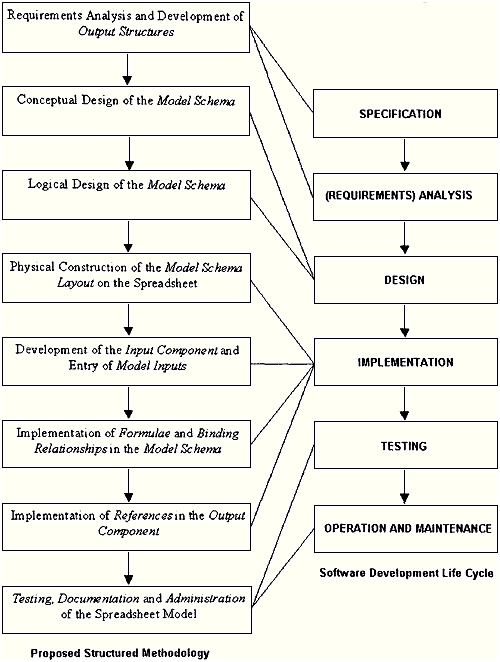Authors
Kamalasen Rajalingham
Abstract
Numerous studies and reported cases have established the seriousness of the frequency and impact of user-generated spreadsheet errors. This thesis presents a structured methodology for spreadsheet model development, which enables improved integrity control of the models. The proposed methodology has the potential to ensure consistency in the development process and produce more comprehensible, reliable and maintainable models, which can reduce the occurrence of user-generated errors.
An insight into the nature and properties of spreadsheet errors is essential for the development of a methodology for controlling the integrity of spreadsheet models. An important by-product of the research is the development of a comprehensive classification or taxonomy of the different types of user-generated spreadsheet errors based on a rational taxonomic scheme.
Research on the phenomenon of spreadsheet errors has revealed the need to adopt a software engineering based methodology as a framework for spreadsheet development in practical situations. The proposed methodology represents a new approach to the provision of a structured, software engineering based discipline for the development of spreadsheet models.
It is established in this thesis that software engineering principles can in fact be applied to the process of spreadsheet model building to help improve the quality of the models. The methodology uses Jackson structures to produce the logical design of the spreadsheet model. This is followed by a technique to derive the physical model, which is then implemented as a spreadsheet. The methodology's potential for improving the quality of spreadsheet models is demonstrated.
In order to evaluate the effectiveness of the proposed framework, the various features of the proposed structured methodology are tested on a range of spreadsheet models through a series of experiments. The results of the tests provide adequate evidence of the methodology's potential to reduce the occurrence of user-generated errors and enhance the comprehensibility of the models.
Sample

This figure shows the relationship between the proposed structured methodology and the normal stages of the software development life cycle.
The methodology consists of eight principal stages:
- Requirements analysis and development of output structures.
- Conceptual design of the model schema.
- Logical design of the model schema.
- Physical construction of the model schema layout on the spreadsheet.
- Development of the input component and entry of model inputs.
- Implementation of formulae and binding relationships in the model schema.
- Implementation of references in the output component.
- Testing, documentation and administration of the spreadsheet model.
Publication
2002, Ph.D thesis, University of Greenwich, December
